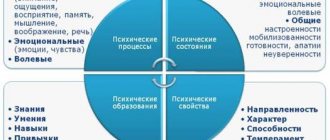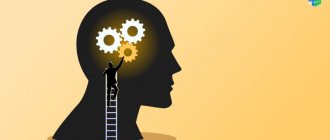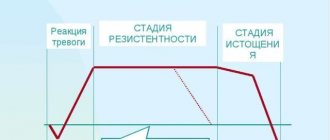Jean Piaget believed that children take an active part in the learning process, acting like little scientists in the process of conducting experiments, observing and learning about the world. As children interact with the world around them, they constantly add new knowledge to existing knowledge and adapt their ideas to new information.
Psychologist Jean Piaget's theory of cognitive development suggests that children go through four different stages of mental development:
Illustration by Joshua Seong, Verywell
Stage 1: Sensorimotor Intelligence (birth to 2 years of age)
Stage 2: Preoperational Conceptions (2 to 7 years)
Stage 3: Specific Operations (7 to 11 years)
Stage 4: Formal Operations (12 years and older)
How did Piaget develop the theory?
Piaget was born in Switzerland in the late 1800s. He published his first scientific work when he was only 11 years old. His interest in children's intellectual development began when he worked as an assistant to Alfred Binet and Theodore Simon, creators of the famous IQ test.
The psychologist's interest in cognitive development began when he observed his own children. These observations strengthened his nascent hypothesis that a child's mind is not just a small version of an adult's mind.
Piaget was one of the first to determine that the thinking of children differs from the thinking of adults. Until this point, children were treated as smaller versions of adults.
Jean Piaget theorized that intelligence is something that grows and develops in stages. Older children don't just think faster than younger children. There are numerous differences between the thinking of younger and older children.
Based on his observations, the psychologist came to the conclusion that children are no less smart than adults, they just think differently.
So simple! Only a genius could think of this!
This is exactly what Albert Einstein called the discovery of Jean Piaget
Cognitive development involves changes in a child's intellectual process and abilities. Development theory includes four stages:
Merits of a psychologist
Piaget was the first psychologist to systematically study cognitive development. His contributions include a stage theory of child cognitive development, detailed observational studies of cognition in children, and a series of simple but ingenious tests for identifying various cognitive abilities.
Piaget didn't want to measure how well children could count, write, or solve problems. Most of all, he was interested in the way in which such fundamental concepts as the very idea of number, time, quantity, causality, justice and other things appeared.
Before Piaget's work, the prevailing view in psychology was that children were simply less competent thinkers than adults. The scientist showed that young children think differently compared to adults.
According to Piaget, children are born with a very simple mental structure (genetically inherited and developed), on which all subsequent knowledge is based. The purpose of the theory is to explain the mechanisms and processes by which a child develops into an individual who can reason and think using hypotheses.
Important Concepts of Jean Piaget
To better understand some of the things that happen during cognitive development, it is important to consider some of the ideas and concepts introduced by Jean Piaget. The following are concepts that influence how children learn and grow:
Model
Models are categories of knowledge that help us interpret and understand the world.
The model includes the category of knowledge and the process of obtaining it. As experience is gained, this new information is used to modify, supplement, or change pre-existing models.
How might the model change? For example, the child saw and touched only small dogs. Now he is sure that they are all the same size and have four legs. The child has already formed a model about this animal. When a child encounters a huge dog, he will change his previously existing pattern of perception.
Assimilation
The process of introducing new information into our existing models is called assimilation. This process is subjective because people tend to modify experiences and information to fit their prior beliefs.
Seeing a dog and calling it “dog” is the assimilation of the animal into the child’s “dog” model.
Device
Another part of adaptation involves changing our existing models in light of new information. This is a process known as adaptation.
Adaptation involves changing existing models. Typically this change occurs as a result of new information or new experiences. New models may also be developed during this process.
Balancing
Jean Piaget believed that all children try to achieve a balance between assimilation and adaptation. This is achieved through balancing. It is important to maintain a balance between applying prior knowledge (assimilation) and changing behavior to accommodate new knowledge (accommodation) throughout all stages of cognitive development. Balancing helps explain how children can move from one stage of thinking to another.
Piaget's theory of cognitive development has helped expand the understanding of children's intellectual growth. She also emphasized that children are not just passive recipients of knowledge. On the contrary, children constantly explore and experiment, building their understanding of how this magical world works.
Translation of the article: Kendra Cherry
What is cognitive development
Cognitive development is the development of thinking in children, during which they comprehend, learn and comprehend things and phenomena. This involves developing the knowledge, abilities, problem-solving skills and dispositions that help children make sense of and understand the world around them. According to Wikipedia, cognitive development covers the development of all mental processes such as perception, memory, concept formation, problem solving, imagination and logic.
Cognitive development can also be called mental development because it affects thinking and mental processes. The development of the brain itself (various brain structures) is an integral part of cognitive development.
As you know, in the first five years of life, children develop rapidly and actively. Their formation unfolds in four important planes:
- Motor (physical) development.
- Language and communication.
- Social-emotional development.
- Cognitive development.
A person’s mental development depends on a number of factors, and their influence is not always clear and uniform. The main ones are:
- genetic factors;
- the course of pregnancy in the mother;
- environmental factors (eg, nutrition, sufficient mental stimulation);
- number of children in the family;
- socio-economic status of the family;
- influence of school and teaching methods;
- personal characteristics of the child and parents, such as temperament, personal style of learning and mastering material, etc.;
- personal qualities of parents, for example, a high level of intelligence or creativity, nonconformism, etc.;
- and other factors.
How mentally developed a person will be depends on various prerequisites, but the process of cognitive development itself occurs in all people in a fairly similar way, passing through the main stages. The first to identify important phases in the development of thinking in children was the Swiss researcher Jean Piaget (1896-1980). His theory and discoveries had a huge impact on the subsequent improvement of psychological theory and understanding of child development, and were in some way revolutionary.
Jean Piaget's theory is widely known and is currently being studied, although it has been supplemented and corrected by more modern research and discoveries. It provides an opportunity to lift the curtain on how a child acquires thinking skills and develops his or her thinking, logic, perception and problem-solving skills. It is worth considering in more detail.
Second stage
The preoperative stage is rare and logically inadequate in relation to mental operations. The child is able to form stable concepts, as well as magical beliefs. Thinking at this stage is still self-centered, which means the child has difficulty seeing others' points of view.
The preoperational stage is divided into a symbolic function substage and an intuitive thinking substage. The first is when children can understand, imagine, remember and picture objects in their mind without having the object in front of them. And the intuitive stage of thinking is when children tend to ask questions: “why?” and “how did it happen?” At this stage, children want to understand everything. Piaget's theory of intelligence is very interesting because of these conclusions.
First stage
According to Jean Piaget's theory, the development of object permanence is one of the most important achievements. Object permanence is the child's understanding that the object continues to exist. Even if they can't see or hear it. Peek-a-boo is a game in which children, who have yet to fully develop object permanence, react to sudden hiding and revealing of the face.
main idea
According to Piaget, maturation is the development of mental processes resulting from biological maturation and environmental experience. He believed that children create an understanding of the world around them, experience discrepancies between what they already know and what they discover in their environment, and then adjust their ideas accordingly. Language depends on knowledge and understanding acquired through cognitive development. Piaget's early works received the most attention.
Fourth stage (formal-operational, logical)
Between the ages of 4 and 7, children become very curious and ask a lot of questions, beginning to use primitive reasoning. There is an interest in reasoning and a desire to know why things are the way they are. Piaget called this the “intuitive substage” because children understand that they have a wealth of knowledge but do not know how they acquired it. Centering, conservation, irreversibility, class inclusion, and transitional inference are all characteristics of preoperational thinking.
Operational and imaginative intelligence
Operational intelligence is the active aspect of intelligence. It includes all actions, overt or covert, taken to trace, reconstruct, or anticipate transformations of objects or persons of interest. Piaget's theory of development insists that the figurative or representational aspects of intelligence are subordinate to its operational and dynamic aspects. And, therefore, this understanding essentially follows from the operational aspect of intelligence.
At any time, operational intelligence shapes the understanding of the world, and it changes if the understanding is not successful. J. Piaget's theory of development states that this process of understanding and change includes two main functions: assimilation and adaptation. They are the driving force behind the development of the mind.
Third stage and animism
Animism is the belief that inanimate objects are capable of action and have lifelike qualities. An example would be a child who believes that the sidewalk has gone crazy and caused him to fall. Artificiality refers to the belief that characteristics of the environment can be attributed to human actions or interventions. For example, a child may say that it is windy outside because someone is blowing very hard, or the clouds are white because someone painted them that color. Finally, preconceived thinking, according to Piaget's theory of intellectual development, is classified under transductive thinking.
Piaget's contribution to psychological science
What can be considered the main result of Piaget’s scientific activity? He created the Geneva School of Genetic Psychology, which studies the mental development of the child. The term "genetic", as used in the expression "genetic psychology", was introduced into psychology in the second half of the 19th century, that is, before biologists began to use it in the narrower sense of the word. The term “genetic psychology” refers to individual development, to ontogenesis. As Piaget notes, the expression “genetic psychology” cannot be used as a synonym for child psychology, the psychology of child development, since general psychology is also called genetic if it considers mental functions in the process of formation.
What does genetic psychology, created by Piaget, study? The object of this science is the study of the origin of intelligence. She explores how fundamental concepts are formed in a child: object, space, time, causality. She studies the child’s ideas about natural phenomena: why the sun and moon don’t fall, why clouds move, why rivers flow, why the wind blows, where the shadow comes from, etc. Piaget is interested in the features of children's logic and, most importantly, the mechanisms of the child's cognitive activity, which are hidden behind the external picture of his behavior.
To identify these mechanisms, hidden but determining everything, Piaget developed a new method of psychological research - the method of clinical conversation, when not symptoms (external signs of a phenomenon) are studied, but the processes leading to their occurrence. This method is extremely difficult. It gives the necessary results only in the hands of an experienced psychologist. According to E. Claparede, Piaget's method is mental auscultation and percussion, this is an art - the art of asking.
Piaget critically analyzed the methods that were used before him and showed their inadequacy for elucidating the mechanisms of mental activity. And now, when the test method is increasingly attracting the attention of psychologists, it is worth recalling Piaget’s positions on this issue. Half a century ago, he proved that tests can only serve selection purposes, but do not provide an idea of the inner essence of the phenomenon. What problems does the genetic psychology created by Piaget solve? This science studies how the transition occurs from one form of mental activity to another, from a simple structure of mental activity to a more complex one, and what are the reasons for these structural transformations. She studies the similarities and differences between the mental life of a child and an adult.
The genetic psychology created by Piaget, as recognized by foreign researchers, is developing in three directions:
1. the problems that constitute its subject are determined;
2. research technique is developed;
3. accumulation, organization and interpretation of facts occur.
Piaget's genetic psychology occupies a special place in the system of sciences between biology and philosophy. The desire to connect biology and problems of cognition explains Piaget's dual orientation as a psychologist. Therefore, as noted by his student and closest collaborator B. Inelder, in order to understand Piaget’s theory, one must know the biological premises from which it comes and the epistemological conclusions to which it leads.
Piaget created genetic psychology so that a genetic epistemology could be built on its basis. According to Piaget's definition, genetic epistemology attempts to explain cognition, and in particular scientific knowledge, on the basis of its history, sociogenesis and the psychological origins of those concepts and operations on which scientific knowledge is based. Piaget was deeply convinced that psychological data must be used to study the nature of cognition. To solve fundamental epistemological problems (chief among them the means by which the human mind moves from a state of insufficient knowledge to a higher level of knowledge), we cannot reconstruct the genesis of human thinking in prehistoric man. We know nothing about the psychology of Neanderthal man or the psychology of Cro-Magnon man. But we can turn to ontogenesis, because it is in children that it is best to study the development of logical, mathematical and physical cognition.
So, based on the prospect of creating genetic epistemology, the science of the origin and development of scientific knowledge, Piaget transferred traditional questions of the theory of knowledge to the field of child psychology and began to solve them experimentally. He was interested in whether the subject distinguishes the external world from the internal, subjective world and what are the boundaries of such a distinction. Piaget wanted to find out whether the external world acts directly on the subject's mind or whether his ideas are products of his own mental activity. And if the subject is active in the process of cognition, then what is the interaction between his thought and the phenomena of the external world, what are the laws to which this interaction is subject, what is the origin and development of basic scientific concepts?
Third stage (operating stage)
At the age of 2 to 4 years, children cannot yet manipulate and transform thought forms, think in images and symbols. Other examples of mental abilities are language and pretend play. In addition, the quality of their symbolic play may have consequences for their later development. For example, young children whose symbolic play is violent are more likely to exhibit antisocial tendencies in later years. Piaget's intellectual theory proves this to us.
Stages of child intelligence development according to Piaget
Stages of child intelligence development according to Piaget from 0 to 2 years
Sensorimotor stage (0-2 years)
This stage of baby development involves understanding the world around us through actions, for example: looking at, grasping, biting, sucking, etc. Also during this period, progress in the development of innate reflexes is observed. At this stage, young children repeat events by experimenting with their bodies, for example: by hitting a toy they create noise, throw toys away, etc.










